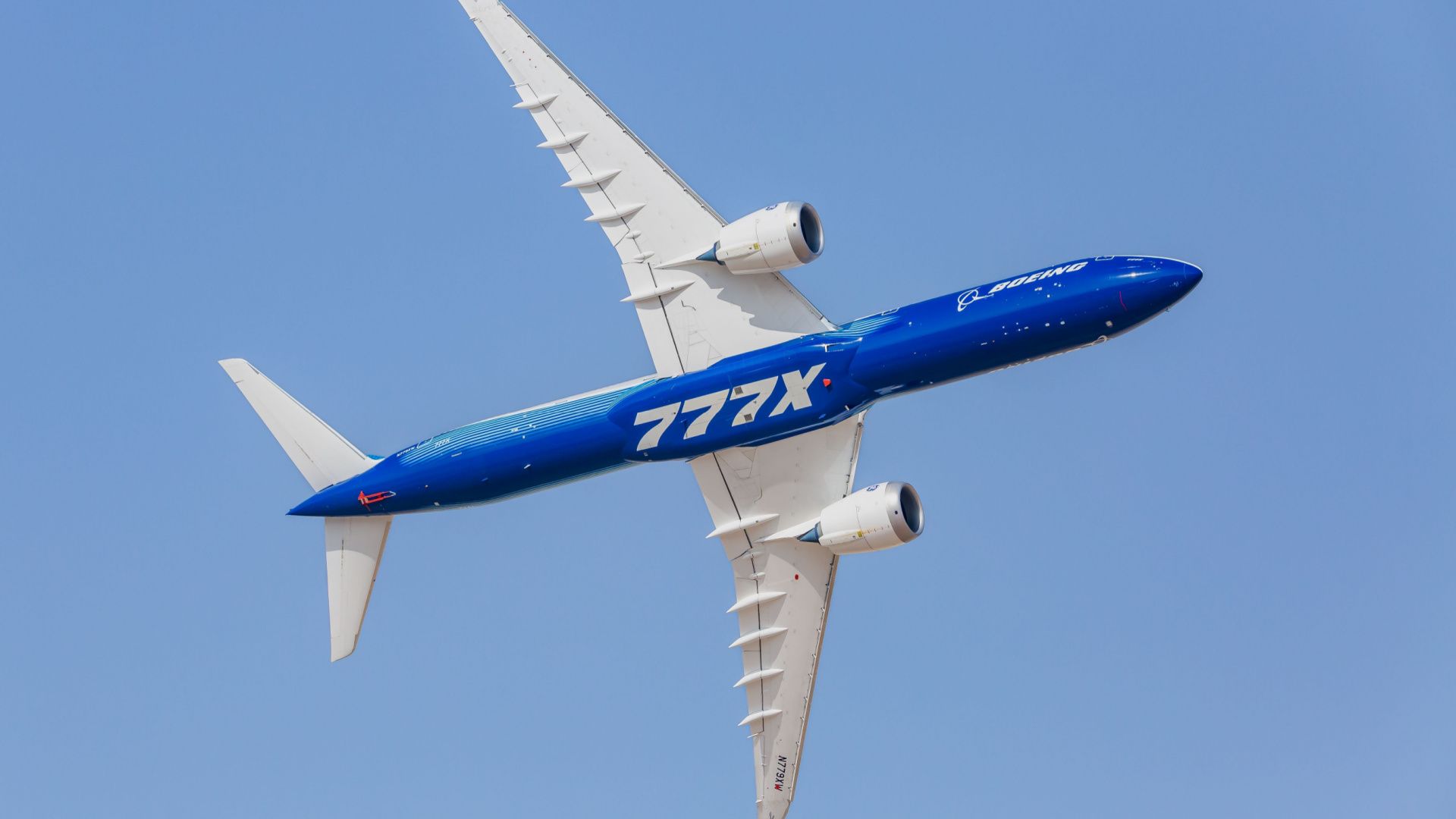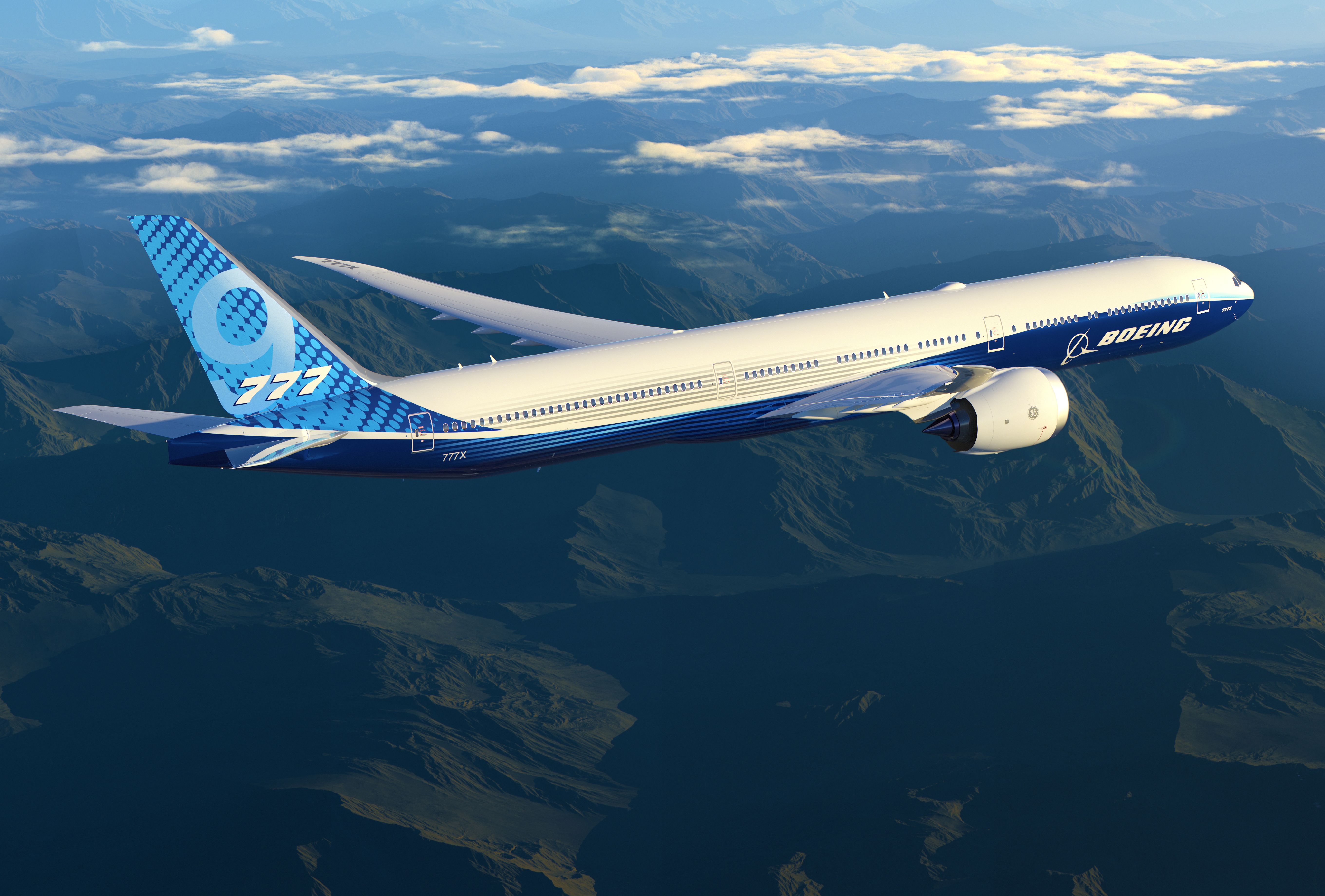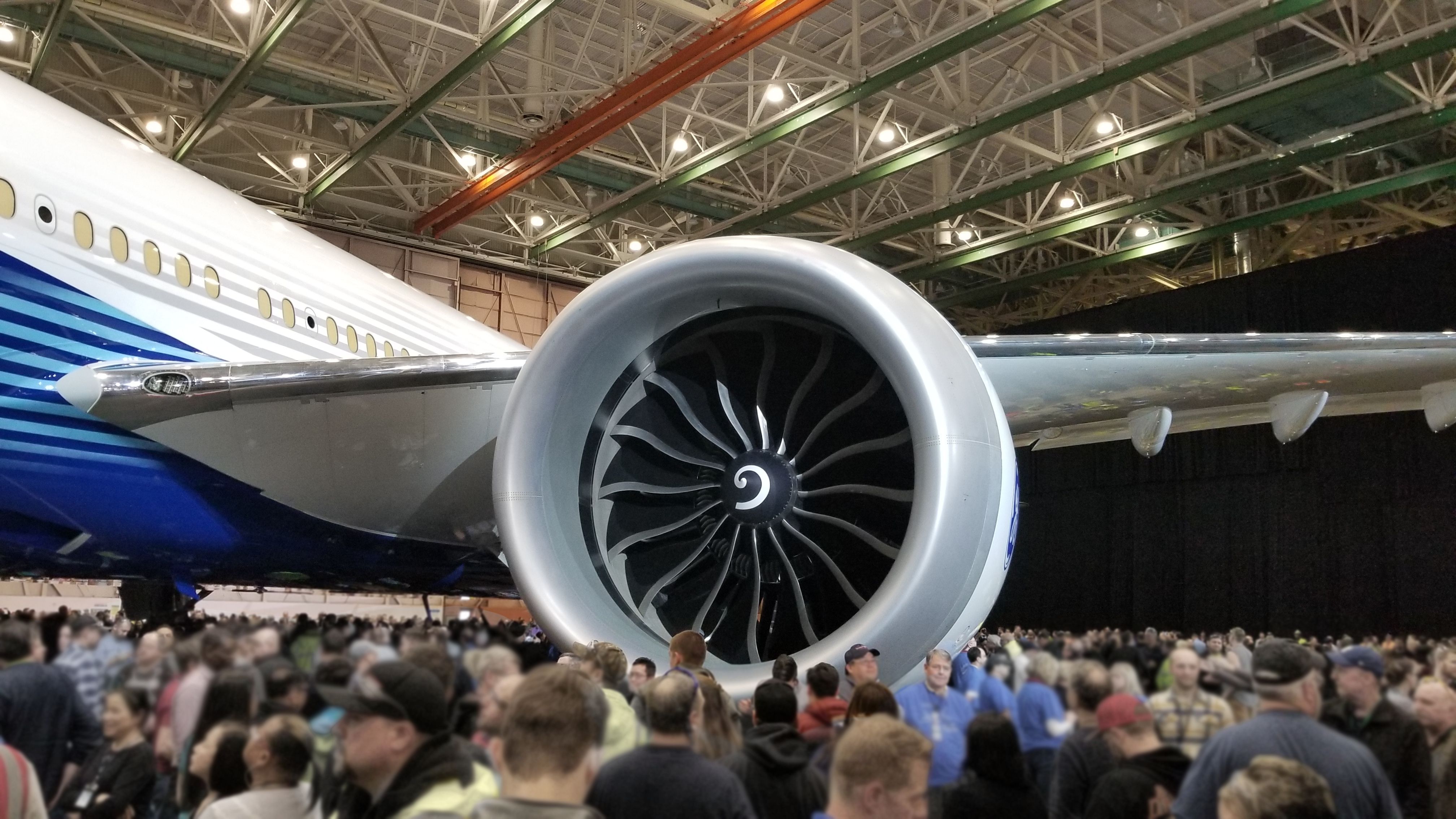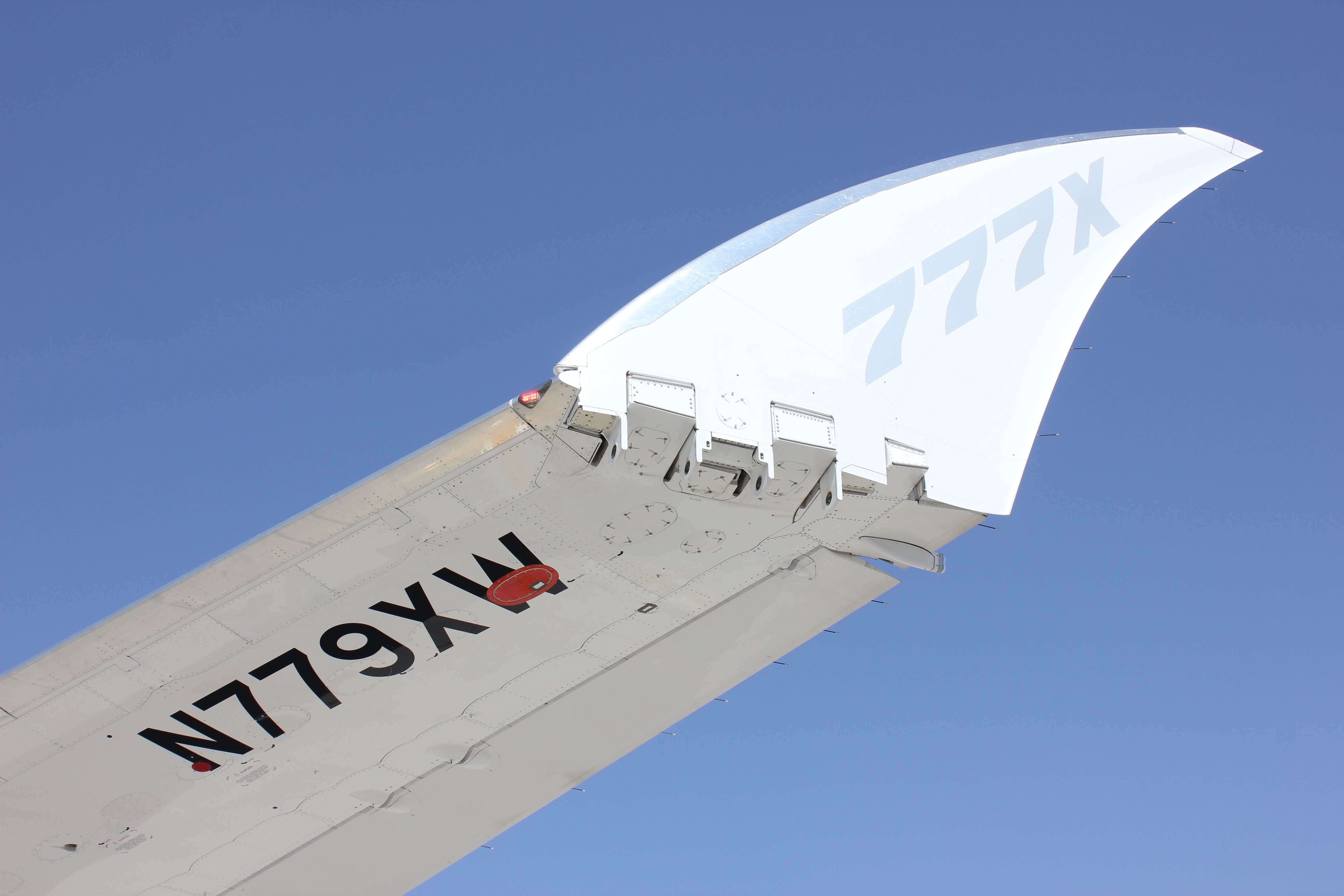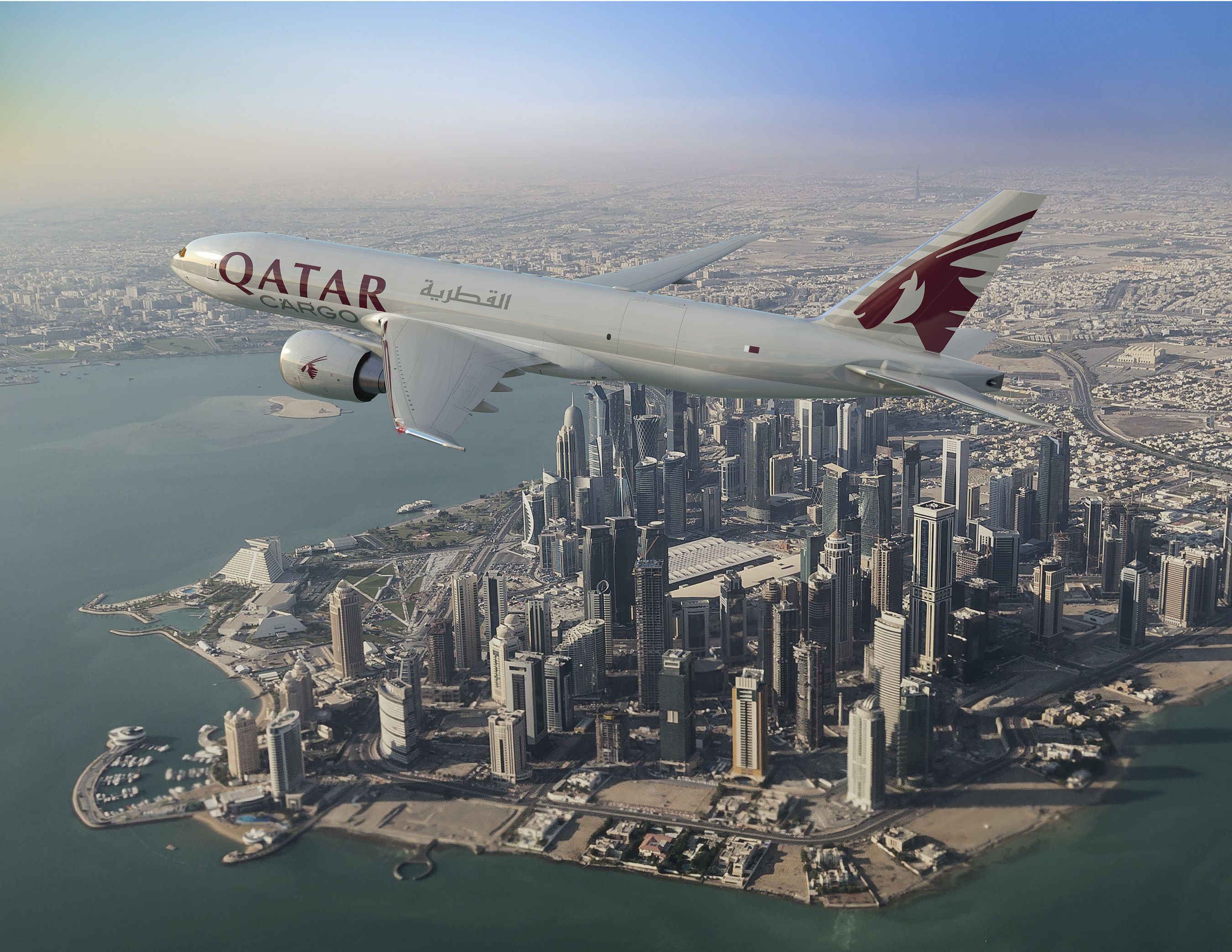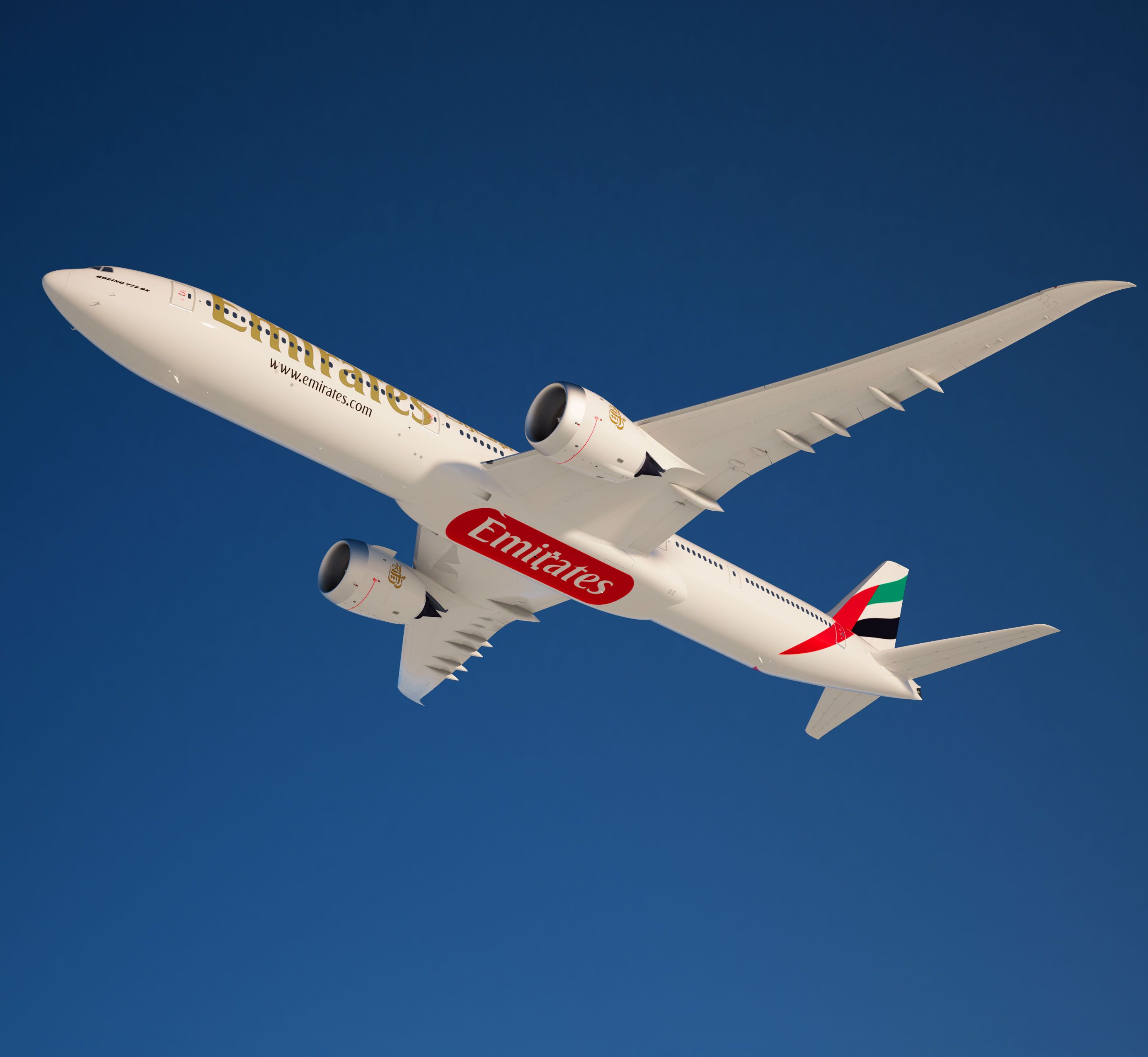The latest widebody from Boeing, the 777X, is on the way. With the most powerful engines to date, the largest capacity of any twin-engine jet, and efficient long-range operation, it promises a lot. Delivery has been repeatedly delayed, however, and some carriers are frustrated. Once in service, though, it will radically change many airline fleets.
Introducing the Boeing 777X
The Boeing 777 has been the best-selling widebody aircraft to date. It entered service in 1995, however, and is well due for a replacement. The Boeing 777X was launched in 2013 as a replacement for the 777 (and for the 747), based on updates to the existing 777 rather than a full clean-sheet design. There will be two versions of the Boeing 777X, the 777-9 and the smaller 777-8, with a third option for an ultra-long-range model not currently planned.
The 777-9 stretches the fuselage of the 777-300ER to over 76 meters in length, offering a passenger capacity of up to 426 (in a two-class configuration, according to Boeing data). The smaller 777-8 model will have a length of almost 71 meters, with a passenger capacity of up to 395 - this planned length was increased in 2023 and will now be the same as the intended freighter version of the aircraft.
More power, but efficient operation
The 777X uses new General Electric GE9X engines. These are the largest and most powerful commercial engines ever built. They are even bigger than a 737 fuselage and will deliver 105,000 lb/f of thrust.
Despite the increased size, these engines are lighter than the GE90 engines on the Boeing 777 (mainly due to fewer fan blades and the use of carbon fiber composite materials). Overall, the 777X is around 20% more efficient than the 777-300ER and about 10% more efficient (both in fuel use and operating cost) than its Airbus competitor, the A350-1000, according to Boeing data.
High range, and ability to operate at more airports
As we've covered before, the signature addition to Boeing's 777X is its folding wingtips. The 777X has a huge wingspan. This boosts performance and efficiency in the air but can be a problem on the ground. Crucially, the folding wingtips reduce this wingspan from 71.8 m (235 ft 5 in) to 64.8 m (218 ft 8 in). The technology for this has existed for a while and was planned for the 777 at one point. Operation is controlled simply with a switch, and after landing and slowing past 50 kts, the wingtips will automatically begin to fold.
This keeps the 777X in the second largest of the six groups defined by FAA's Airplane Design Group (ADG). One of the main problems faced by the Airbus A380 has been its categorization in the largest group and the limitations this has placed on the airports where it can operate.
Want answers to more key questions in aviation? Check out the rest of our guides here.
Its range, too, will place it well against the competing Airbus A350 and the retiring Boeing 747. For the 777-9, this is 7.285 nautical miles (13,500 kilometers), and for the later to launch 777-8, it will be 8.745 nautical miles (16,190 kilometers).
New Boeing 777X freighter option
There was plenty of discussion earlier on about the possibility of a freighter aircraft based on the 777X airframe. This has been confirmed, and Boeing hopes to deliver the first freighter in 2027. This will act as a replacement for the 747 and 777 freighters and compete strongly with the Airbus A350F freighter. The 777X freighter will offer a higher payload (of 118.2 tonnes) than both the 777F and A350F, but the A350F will beat it on range, at around 300 nautical miles further.
With the changes made to the planned 777-8 in 2023, the two aircraft will now have the same fuselage size and wingspan. It will have the same upper and lower deck pallet loading as the 777 freighter but will take more pallets. Qatar Airways was the first airline to order the 777-8F (back in 2019). Ethiopian Airlines, Lufthansa, ANA, and Cargolux have all since followed with orders.
What's the latest with the 777X in 2023?
Entry into service and delivery of the 777X has repeatedly been delayed - this should have already happened. The aircraft is well into the testing program, but there have been several shifts in the target certification date. This has been for several reasons - including engine issues and moving resources to the 737 MAX 7 and MAX 10 programs.
The first delivery is now expected in early 2025. As of the end of August 2023, nine airlines have placed Boeing 777X orders for a total of 363 aircraft ordered (including freighter variants). This includes a massive order of 115 aircraft from Emirates. With the delivery so delayed and the 777X forming such a significant part of its fleet replacement strategy, this has caused major concern. Boeing has confirmed it will send a first aircraft to Emirates for proving flights in 2024.
Many airlines (including Emirates, Qatar Airways, Etihad Airways, Lufthansa, and British Airways) are, or have been, Airbus A380 operators. It is no surprise that the 777X will act as a replacement for this for many airlines, as well as previously retired Boeing 747s and aging Boeing 777s. It certainly marks the final move away from commercial quadjets. The A380 will, of course, remain in service for years to come, but twin-engine high capacity is now the way forward.
Get all the latest aviation news right here on Simple Flying.
What do you think of the Boeing 777X? Do you think it will offer great things to airlines and passengers? Let us know your thoughts in the comments.
Sources: Boeing

